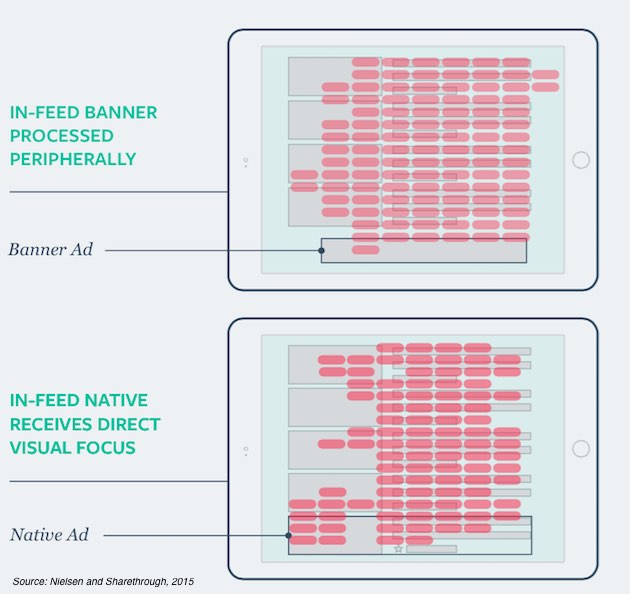Native ads in digital news feeds receive significantly more visual attention from consumers than banner ads do, according to a recent report from Sharethrough and Nielsen.
The report was based on data from a study in which mock banner and native ads from five advertisers were shown to participants in a video simulating the experience of scrolling through an editorial feed. Using a combination of EEG data—measurements of neural activity in the brain—and eye tracking, Nielsen quantified where and how the participants' focus was directed.
In-feed native ads in the desktop simulation received 25% more attention from study participants than banner ads did; on tablets, the native ads received twice as much visual focus as the banners.

Native ads and banner ads were also processed visually in different ways by study participants.
The banner ads displayed received little to no visual focus on the text; instead, study participants processed the ads in the peripheral field of vision, similar to how they viewed images.
With the native ads, visual focus was on the text rather than the thumbnail, similar to the surrounding editorial content. In other words, the native ads were read in addition to being seen.

About the research: The report was based on data from a study in which mock banner and native ads from five advertisers were shown to participants in a video simulating the experience of scrolling through an editorial feed.




